How to spot and recover from running injuries
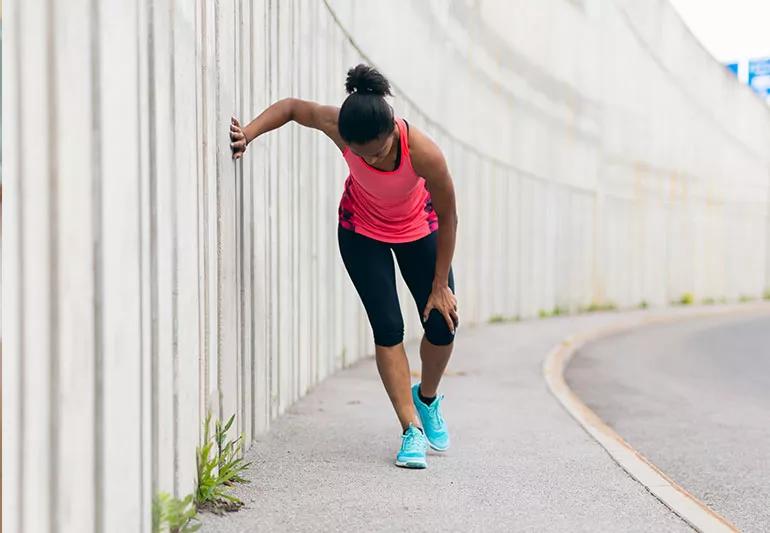
Running can be hard on the body. And although you’re bound to have minor aches and pains from time to time, getting sidelined from a running injury is the last thing any runner wants. Even so, when something does bother you, like a whiny hamstring or tender knee, it can be hard to decipher what’s actually going on and what’s causing it.
Advertisement
Cleveland Clinic is a non-profit academic medical center. Advertising on our site helps support our mission. We do not endorse non-Cleveland Clinic products or services. Policy
Here orthopaedic surgeon Michael Scarcella, MD, discusses six common injuries related to running that tend to plague runners the most.
Small aches and some lingering soreness can be normal, but the most common running injuries include:
Up to 60% of runners have or will experience an injury severe enough for them to put away their running shoes for several weeks or months. But ironically, shoes play the biggest role in injury prevention when it comes to running.
“Running shoes are the only protective equipment runners have to safeguard themselves from injury,” says Dr. Scarcella. “So choosing the correct running shoe is important.”
And as much as running shoes are important, there are several other variables at play when it comes to injuries during running. Training schedule and volume, flexibility, recovery, strength and form also need to be considered when talking about preventing or even treating running injuries.
Running injuries can either be acute or chronic, but both need to be managed within an appropriate timeframe to assure optimal healing.
Acute injuries are sudden, sometimes violent injuries. These include broken bones, sprains and lacerations. Proper first aid for acute injuries include:
Advertisement
Be on the lookout for immediate swelling or if there is persistent, severe pain. If you’re unable to use the injured part or if you hear or feel a tear, crack or pop, seek medical care as soon as possible.
Overuse injuries are due to a low-grade, abnormal force being applied repeatedly over a prolonged period of time. (Hello running!) These are the most common injuries for a runner to have.
Many things can contribute to overuse injuries, including:
Overtraining is the leading cause of overuse injuries, says Dr. Scarcella.
So how do you know if you’re overtraining? Look out for these symptoms and warning signs:
Think of a running injury like a traffic light. Green means you’re feeling great, yellow is a warning sign when the pain creeps in and red means severe pain. Most runners often fall in-between colors. Meaning some days they feel great and are in the green, and other days a mild ache or pain will annoy them on a run and they move into yellow. Other times, a runner will bounce between yellow and red when it’s a nagging injury that has been bothering them a while.
Whether you’re in the full-blown red zone or lingering in yellow, the simplest way to stop overuse pain is to reduce your training, using pain as a guide. Sometimes this means taking time off completely (sorry, your marathon might have to wait until next year) or dialing back on how often and how far you’re running each week.
Other ways to treat overuse injuries include:
You should contact your doctor or a physical therapist if your pain continues despite decreased training, if your pain persists beyond 10 to 14 days or if the pain resolves with rest, but recurs once you resume training.
Advertisement
The primary symptom of plantar fasciitis is pain in the bottom of the foot, from the heel into the arch. It’s especially painful when you get up in the morning and after you’ve been sitting for a long time. The discomfort may be present at the start of a run or subside during the run and then recur later.
Causes of plantar fasciitis:
Treatment for plantar fasciitis:
Advertisement
The best method for preventing plantar fasciitis is stretching. The plantar fascia can be stretched by grabbing the toes, pulling the foot upward and holding for 15 seconds.
To stretch the calf muscles, place hands on a wall and drop the affected leg back into a lunge while keeping the heel of the back leg down. Keep the back knee straight for one stretch and then bend the knee slightly to stretch a deeper muscle in the calf. Hold the stretch for 15 seconds and repeat three times.
Achilles tendonitis is characterized by pain with heel strike, pain when the foot lands on a curb, when running up the stairs or with a sudden change of direction. Pain may be more prominent in the morning with the first few steps out of bed. This is because the calf muscle is shortened in sleeping positions.
Causes of Achilles tendonitis:
Treatment for Achilles tendonitis:
Advertisement
To help prevent Achilles tendonitis from occurring, proper stretching—such as leaning into a wall with your back leg straight or knee slightly bent—as well as proper shoe maintenance should be used.
When a person has runners’ knee, the pain builds up gradually and is usually located beneath or around the kneecap. The pain is aggravated by squatting and going up and down stairs. Stiffness in the knee after prolonged sitting is also a symptom of this injury.
Causes of runners’ knee:
Treatment for runners’ knee:
Efforts to prevent runners’ knee from happening begin with strengthening. Hip strengthening is very important for runners in avoiding injury.
To strengthen the hip abductors, lie on your side, keep your hip and knee in a straight line and kick leg up towards the ceiling keeping the leg in line with the body. To strengthen the hip extensors, lie on your stomach, squeeze your butt muscles and lift your leg off the ground.
A runner should perform strengthening slowly and with good control. Repeat 15 to 20 repetitions and do three sets.
This type of injury is characterized by pain on the outside of the knee while running. A runner may also experience pain on the outside of the hip or leg. With this injury, a runner may notice the pain more on slower runs than fast runs, running hills or going up or down stairs.
Causes of Iliotibial band (ITB) syndrome:
Treatment for Iliotibial band (ITB) syndrome:
Stretching your IT band can help prevent this injury. To stretch this muscle, stand with the affected leg towards a wall, cross the unaffected leg in front of the affected leg, place arm on the wall and drop hips towards the wall. You should feel the stretch on the side of the hips or side of the knee. Hold the stretch for 15 seconds and repeat three times.
As the name suggests, a shin splint injury is pain in the shin while running. The pain first starts after running, but then progresses to a persistent pain. If you continue to have pain, you should visit your doctor.
Causes of shin splints:
Treatment for shin splints:
The best way to help prevent shin splints is to practice good shoe maintenance. Most importantly, a runner should wear shoes that are appropriate for his or her foot type and training intensity. You may need prescription orthotics if the foot mechanics cannot be controlled with a shoe alone.
A running shoe needs to have good shock absorption in order to decrease the stress on the shins. Running shoes lose 30% to 50% of their shock absorption ability after about 250 miles. Shock absorption is greatly reduced when running in wet shoes. To assure adequate shock absorption when running every day, a runner should alternate shoes. Running shoes need to be replaced every 400 to 600 miles to help prevent injuries like shin splints.
Stress fracture injuries cause persistent pain, most commonly in the shin, but at times in the foot, hip, thigh or pelvis. Causes and treatments for stress fractures are similar to the ones that apply to shin splint injuries. However, stress fractures are more severe than shin splints and require serious management.
Some runners may be immobilized in a walking boot or be required to use crutches to allow the stress fracture to heal. Sometimes surgery is required if the stress fracture is severe enough or is in an area of high risk. Cardiovascular training must focus on non-weight-bearing activities like swimming.
The best approaches to preventing stress fractures are proper training, proper shoe maintenance and not running on excessively hard surfaces. A physician should evaluate if you suspect you have a stress fracture during your training.
Learn more about our editorial process.
Advertisement
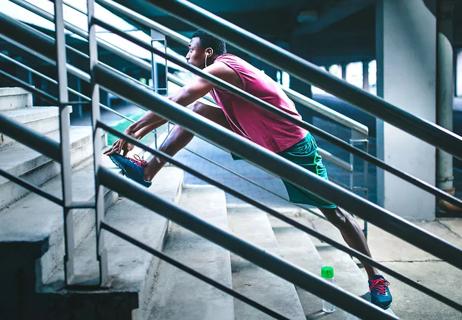
Take steps to stay on track and off the sidelines
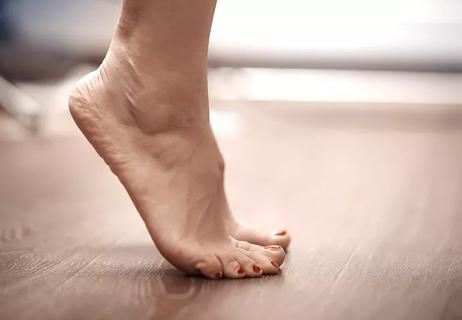
You can improve strength and stability with these eight easy exercises
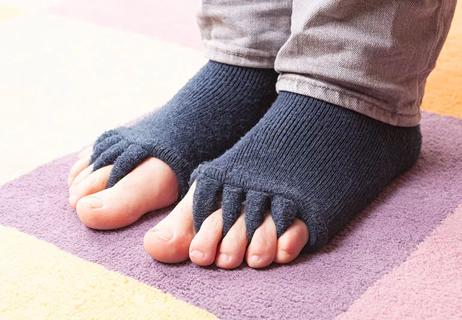
Toe spacers and separators can add some comfort, but they’re not a fix-all

Dulling feeling in your feet could cause problems
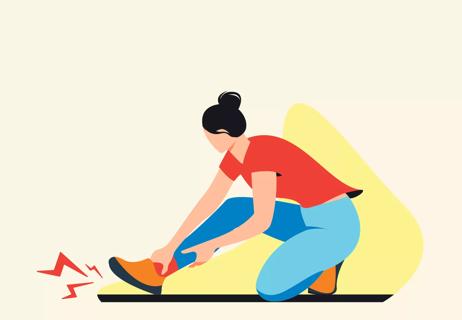
You might have plantar fasciitis, Achilles tendinitis or arthritis

Pick shoes that make your feet happy and are good for your overall health

A tear in the stabilizing structure under your foot is a common cause
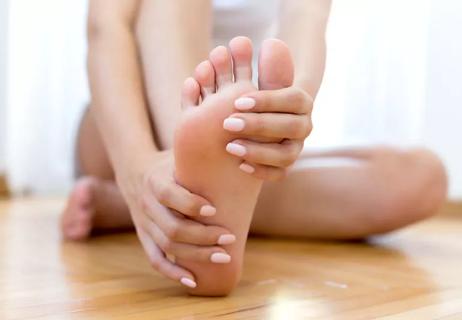
Heel spurs aren’t the only culprit when it hurts to walk

Type 2 diabetes isn’t inevitable with these dietary changes

Applying a hot or cold compress can help with pain